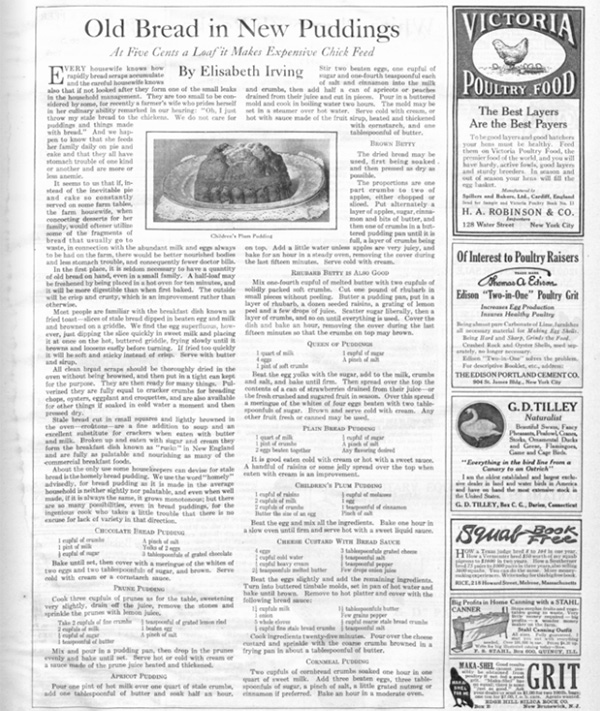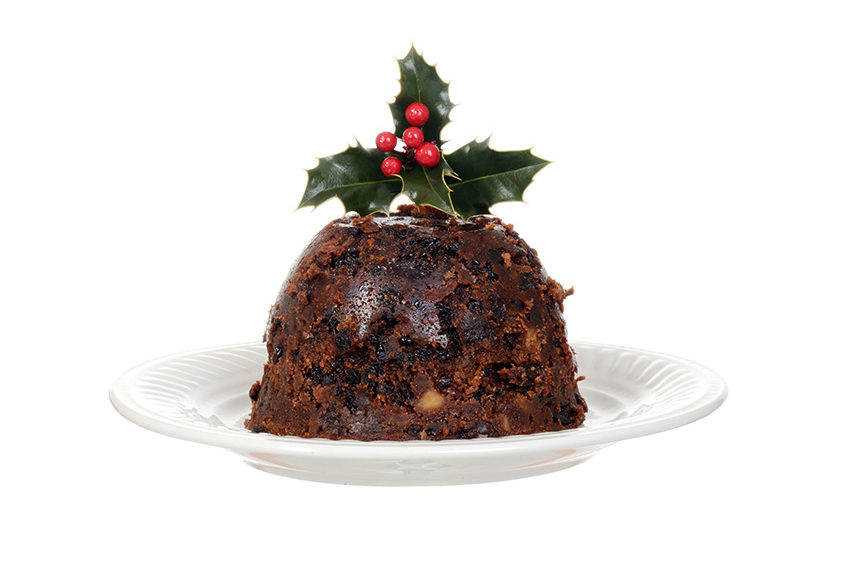Having grown up in a small town and regularly attending its Methodist church, it has never occurred to me that a church service could be crowded or, heaven forbid, full. So when I marched into the Unitarian Universalist Church to attend a winter solstice celebration, promised to be “a night that ranges from meditative to raucous,” I was shocked to learn that there was no room at the inn.
Like the three wise men, I had come bearing gifts — a homemade figgy pudding — and like the virgin Mary, I was turned away. I was about fifteen minutes late, and the greeter was only acting in accordance with the city fire code. And it wasn’t a real figgy pudding.
Similarly to Joan Didion, I think of myself as a “can-do” person. Particularly around the holidays, I am inspired to open my oldest bottle and bake up seasonal confections in the traditions of the days of old. Last year, I made a fruitcake. This year, I planned to tackle the elusive figgy pudding.
The only problem is that figgy pudding appears to be little more than a holiday lyric.
At least, that seems to be the case with this dessert that everyone sings of and no one actually eats. The archives of The Saturday Evening Post make no mention of a popular dish called figgy pudding, but NPR explored the history of figgy pudding several years ago, and they maintain that it is, indeed, real and edible. The recipe they provide calls for beef suet, five to six hours of boiling, and — ideally — four to five weeks of aging. If you have that kind of time and enterprise, then, by all means, whip up the Victorian treat during a movie marathon.
Instead, I opted for a bread pudding recipe from the January 28, 1913, issue of this magazine. In “Old Bread in New Puddings,” Elisabeth Irving makes a convincing, if dubious, case for making bread pudding from all of those leftover bread crumbs that would be found in the early century home: “It seems to us that if, instead of the inevitable pie and cake so constantly served on some farm tables, the farm housewife, when concocting desserts for her family, would oftener utilize some of the fragments of bread that usually go to waste, in connection with the abundant milk and eggs always to be had on the farm, there would be better nourished bodies and less stomach trouble, and consequently fewer doctor bills.”
Having made the famous Thanksgiving classic, persimmon pudding, recently, I was in abundance of buttermilk (make Eva Powell’s award-winning recipe with very ripe persimmons, if you can get them, and serve it with whipped cream and a dusting of cinnamon), but I haven’t found myself baking loaves of bread lately, so I dried bread crumbs from store-bought baguette. I made the “Chocolate Bread Pudding” (see the flipbook below) from our archives, but I made a few changes, rendering Dark Chocolate Bread Pudding with Blueberry Preserves and Mandarin Orange Meringue.
The blueberries were an accident. I grabbed a jar in haste at the grocery store, thinking it was cherry preserves. When I arrived at home and discovered my mistake, I decided I would have to live with it. If medieval homemakers could mix meats and fruit, then I was allowed to get creative with dark chocolate.
The beauty of bread pudding is, just as Elisabeth Irving puts it, “there are so many possibilities, for the ingenious cook who takes a little trouble that there is no excuse for lack of variety in that direction.” Bread pudding is like sweet stuffing. You can throw anything you’d like into it. If you want to toss in dried figs (first cooked in brandy) and sing about your perfectly appropriate pudding, you can!
After my pudding and I were denied entry to the pagan celebration, I took it to a friend’s Christmas party. I had a vision of waltzing in with my festive dish, dousing it in brandy, and setting it aflame as the other party guests applauded my culinary achievement. When I arrived, the house was so packed full of people I could barely squeeze through to the dessert table. I searched for my friend, a student of performance art at the New School back home for the holidays, and ended up striking conversations with various lawyers while keeping one eye on my untouched bread pudding.
Would the other guests love it? Hate it? Would they wonder aloud who possibly could have created the dark chocolate bread pudding, announcing the taste of fruit and zip of citrus that ties it together so nicely?
When I finally found my friend, he introduced me to other, college-age, interesting people. They were involved in theatre or fashion and had the excited spark of students in their early 20s. One of them was terribly fit, and I learned that it was because he was a tightrope performer at École nationale de cirque in Montreal hoping to join Cirque du Soleil. My friend told me he was going to perform a piece of performance art in ten minutes. “It’s a very interactive performance,” he said. Oh no, I thought.
I hadn’t the time or the patience with the crowd to make my way back to the pudding to see if it had been devoured, perhaps fought over. My friend gave his performance, a combination of audience interaction and audio recorded on a day he had zip-tied himself to a fence in Manhattan. We maintained eye contact with strangers for ten minutes and shared how we felt about the sounds of our own names. Then he instructed us to find a spot around the room and to lie down. He told us to hold hands with the person closest to us. This is taking longer than I expected, I thought. I wonder how that pudding is doing. The person closest to me was the tightrope acrobat. I hadn’t said much to him up until that point, but we followed directions, grasping hands while lying in opposite directions.
Immediately after assuming a grip, I realized it was the most uncomfortable position possible. But it would also seem too imposing (or too intimate?) to spend time finding a better position for my hand. Minutes passed as the audio played. I realized I was slightly hovering my hand off the floor quite awkwardly, and it was starting to go numb. My partner stayed perfectly still, so I didn’t want to break anyone’s concentration. Of course he’s excelling at this, he’s an acrobat, I thought. He’s used to these kinds of endurance tests. Then I realized my palms were sweating. On the audio, a street drummer played an entrancing rhythm on buckets and bells while the wind ripped across the microphone. I wanted to check on the pudding.
Afterwards, I poured a glass of wine to the brim and headed to the dessert table. The pudding was gone! And its plate washed and drying in the kitchen. I would never know if the serving dish had been desperately licked clean by lawyers’ children who would be forever haunted by the mystery dessert they could never find again. Then, I realized I didn’t even know for myself whether the bread pudding was as delectable as I imagined, because I never got a piece. I chewed some peppermint bark and said my goodbyes, preparing for more intrusive thoughts about the best bread pudding I never had.
Dark Chocolate Bread Pudding with Blueberry Preserves and Mandarin Orange Meringue
- 2 cups bread crumbs
- ¾ cup sugar (plus 1 cup for meringue)
- ¼ cup molasses
- 4 tbsp butter
- 1 pint milk
- 1 pint buttermilk
- 4 eggs
- 6 tbsp dark chocolate powder
- Blueberry preserves (or raspberry or cherry)
- Pinch of salt
- 1 mandarin orange
Directions
- Melt butter, and stir in ¾ cup sugar. Add in molasses, milk, buttermilk, dark chocolate powder, bread crumbs, and salt.
- Separate egg yolks and stir them into the batter, taking care that the batter is not too warm from the melted butter. Save the whites for the meringue.
- Pour into a baking mold, and bake at 300 F for about 2 hours.
- Make meringue using the egg whites, 2 tbsp of juice from the mandarin orange, and 1 cup of sugar, added slowly.
- Once it is set, flip the pudding out of the mold. Using a filling syringe, pipe blueberry preserves into the pudding through the top, making your way around. Cover the top with meringue piled high. Broil in the oven, watching closely, for a few minutes to brown the meringue.

Featured image: Shutterstock.
Become a Saturday Evening Post member and enjoy unlimited access. Subscribe now



